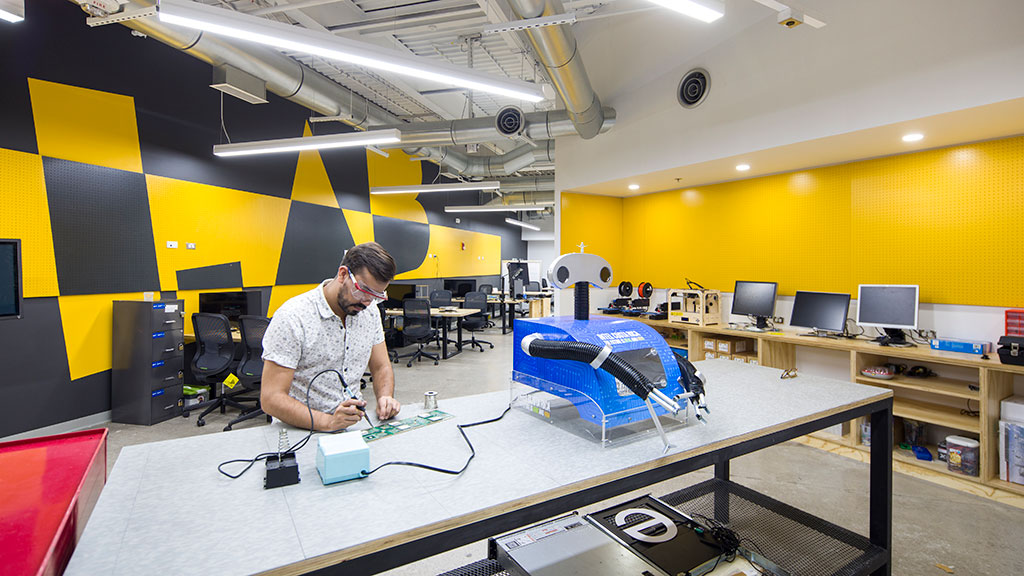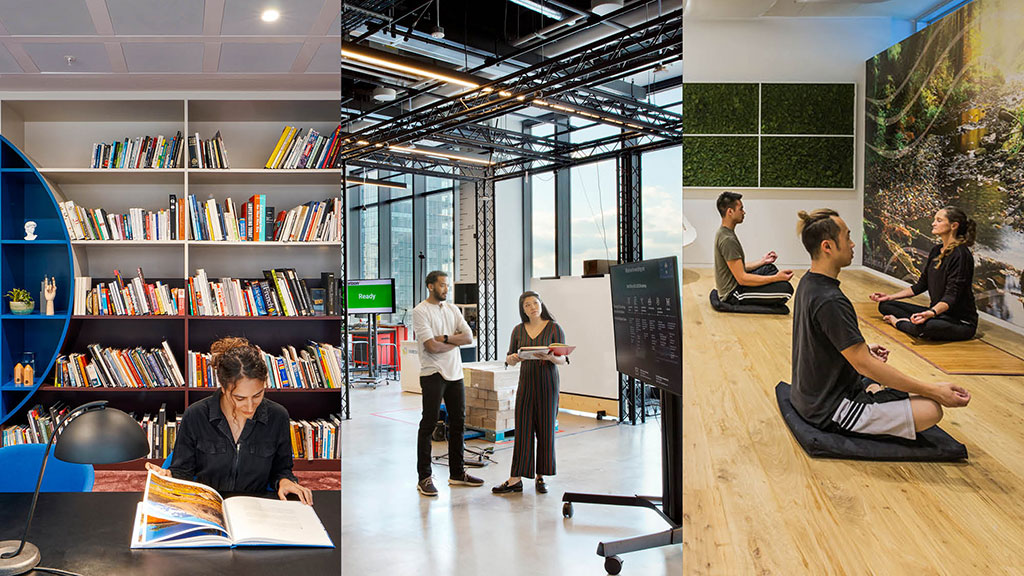10 Spaces That Are No Longer Optional to Create a Great Workplace Experience
February 06, 2023 | By Janet Pogue McLaurin
Editor’s Note: This blog is part of our blog series exploring insights from Gensler’s 2022 Workplace Survey findings.
Everyone wants to know what amenities would bring people back to the office. As employees first started returning, many companies focused on spaces to bring people together, such as social spaces that spur casual interactions and create community. Food amenities ranging from break rooms to cafeterias are now table stakes, and are no longer differentiators. Fifty-eight percent of U.S. companies now provide a work café — and when they are equipped to work — work cafés are highly effective workspaces that contribute to a great experience. Amenities are no longer optional. The new role of the office is not only a place to get work done, but to provide a mix of work experiences for employees. Spaces for individual work, spaces for creative group work, and places to reflect and restore have the greatest impact on workplace effectiveness and experience.
We wanted to understand what spaces matter most to creating not only an effective workplace, but one that also provides a great work experience for employees. In our latest U.S. Workplace Survey 2022 research, we analyzed the data from over 2,000 full-time office workers who are working in the office at least part of the time.
SPACES FOR INDIVIDUAL WORK
People need spaces that help them focus on their work at the office — free from noise, visual distractions, and interruptions. While some people can do some individual work like answering emails in common or social spaces, most people require access to more private spaces than an open plan desk for work activities that required deep concentration, writing, coding, or analytics. According to our research, the following spaces made the highest impact to support individual work:
1. Quiet Zone or Tech-Free ZoneDesignating zones just for quiet work (no phone calls!) or that are tech-free are a change in policy or behavior and do not often require physical modification. In Gensler’s Washington, D.C. office, we have a quiet zone at one end of our floorplate near the leadership area. Although people can still take phone calls and have more hushed conversations, it works well to keep noise at a minimum and encourage creative group work in other parts of the office.
2. Alternative Individual WorkspaceEmployees at the most innovative companies work beyond their desks. Choice has risen 24% this past year, rising to 72% of U.S. employees reporting that they have choice in where to work within their company’s office environment. Providing alternate spaces for individuals to choose where to work within the office drives a more effective workspace, a better work experience, and better individual performance.
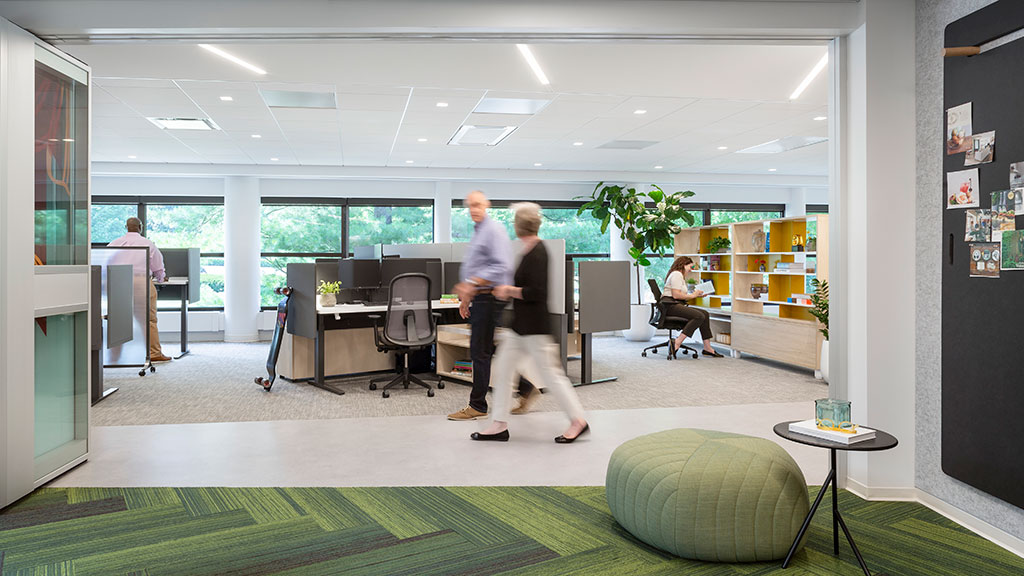
3. Focus Room
U.S. office workers spend one-third of a typical work week working alone and say that 69% of this time requires deep concentration. The vast majority prefer quiet when they need to concentrate. Having ample access to focus rooms is one way to provide access to acoustical privacy and signal to others not to be interrupted.
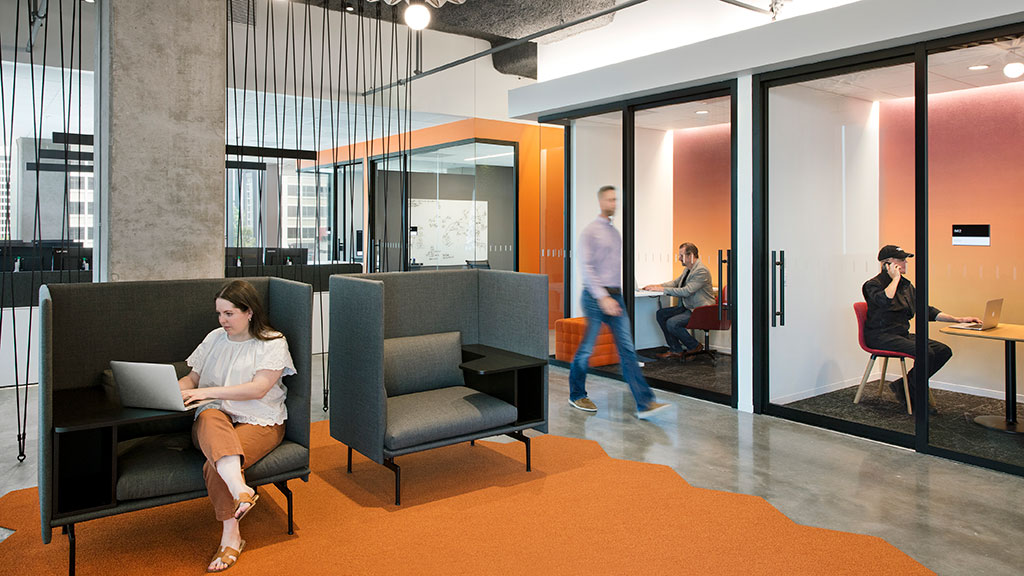
4. Library
Libraries are making a comeback, but it’s not always about the books. Everyone knows the “rules” of a library — hushed conversations and allowing others to read, study, or work. Libraries function as a visual cue for how to behave, either in secluded areas or on full display within the work area.
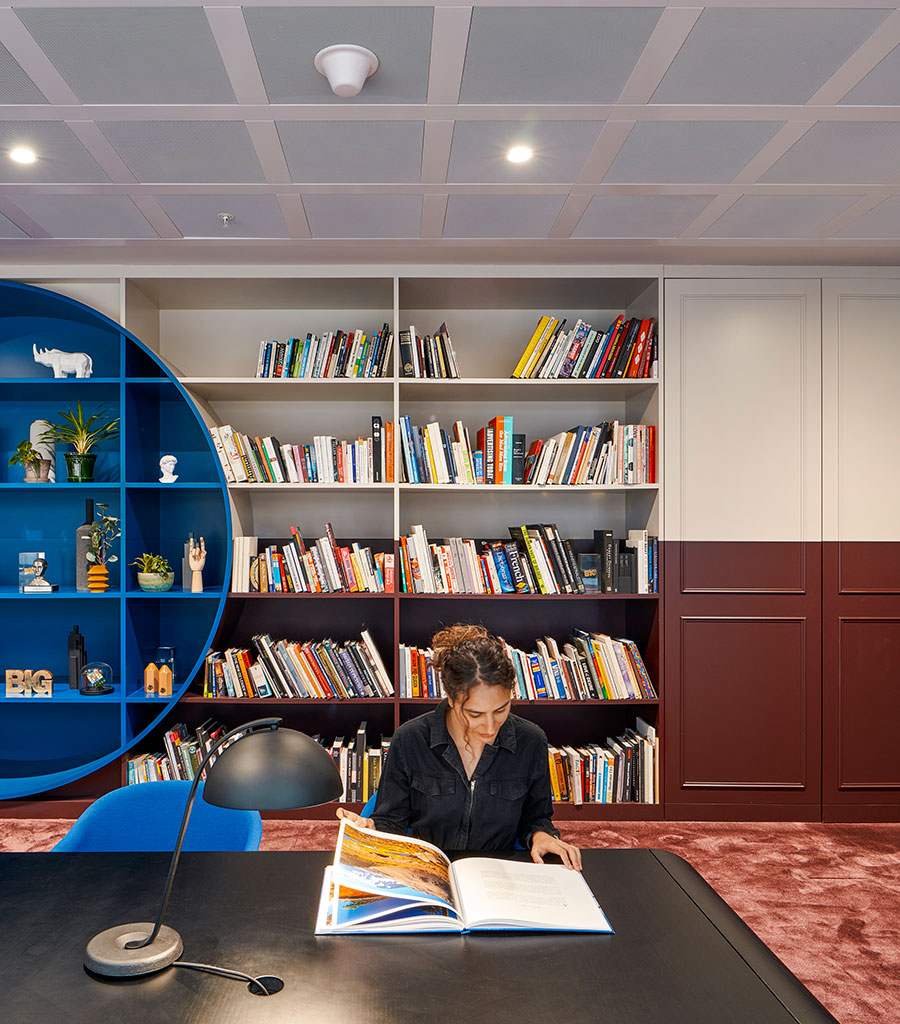
SPACES FOR CREATIVE GROUP WORK
The conference room — with a single table surrounded by chairs — is a typical place for people to meet for status meetings, coordination, or consensus building. But that doesn’t capture how teams collaborate or co-create today. Instead, consider different types of spaces — from innovation hubs and maker spaces to project rooms — that provide a range of flexible settings that allow people to collaborate more effectively, with the right tools to get their work done.
5. Innovation HubGenerating really big ideas rarely happens in a vacuum. Innovation hubs are physical spaces that purposely bring together researchers, subject matter experts, and creators with different viewpoints or fields to nurture, test and experience ideas. Hubs are often highly flexible configurations with a variety of spaces that encourage curiosity and collisions to accelerate the launch of services or products. They are both high-tech and high touch, with places to bring people together to turn ideas or concepts into reality.
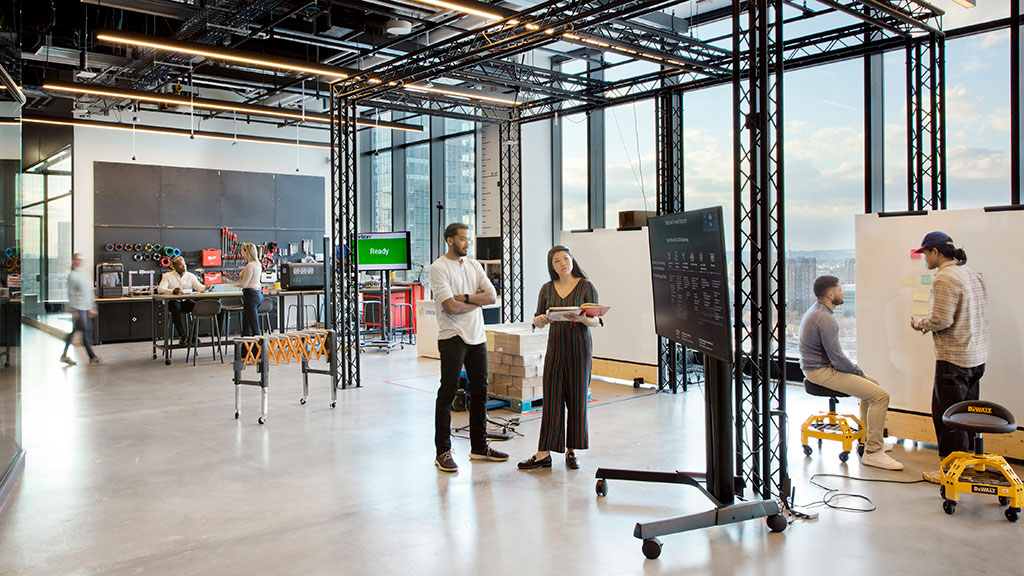
6. Maker Space
New ideas often need to be prototyped and tested in Maker Spaces designed to support hands-on discovery and exploration. Maker Spaces vary depending upon the industry, but can range from robotic labs like Intel’s Innovation Lab in Costa Rica to the Ion Prototyping Lab (IPL) in Houston, which is an open experimentation area for anyone with a great idea. They can be outfitted with 3D printers, fabrication equipment, or even small batch manufacturing tools.
